In this article you will learn how to share data between participants. This is an interesting feature specifically designed for studies or clinical practice involving more than one client or participant (e.g. couple therapy). Practically the following things are possible (here involving client A and client B).
- Trigger a questionnaire or interaction for client/participant B based on the answers of client/participant A
- Share an answer of client/participant A with client/participant B
- Let client/participant B react to the answer of client/participant A
Get the rights to share data between several clients/participants
Practitioners
To prevent that practitioners (or researcher) can randomly share the data of their clients (or participants) with other clients, the practitioner specifically needs to obtain the rights to do this. To obtain the rights please send a mail to contact@m-path.io including the e-mail address coupled to your m-Path account. We have restrained from making this options available for all practitioners to make sure the functionality is not used maliciously. If an account does not have these rights, the features in this article will not work.
If these rights are obtained clients will see the following text when they add you in the m-Path app: ‘The practitioner or researcher will have the right to share your responses with other app users.’.
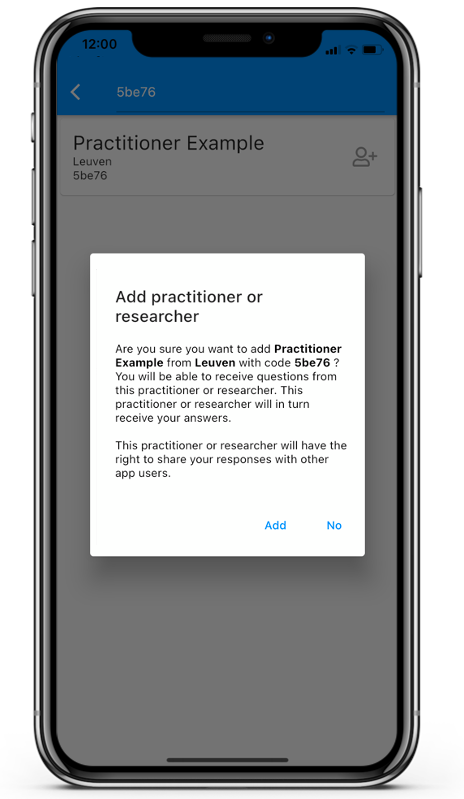
Clients
As a client, you can enable or disable sharing data with other app users. To do so, go to the app settings, go to My practitioners and tap on Options under the practitioner you want to allow or forbid to share your data with other app users. Tap on More and switch the Share data with other app users button on or off.
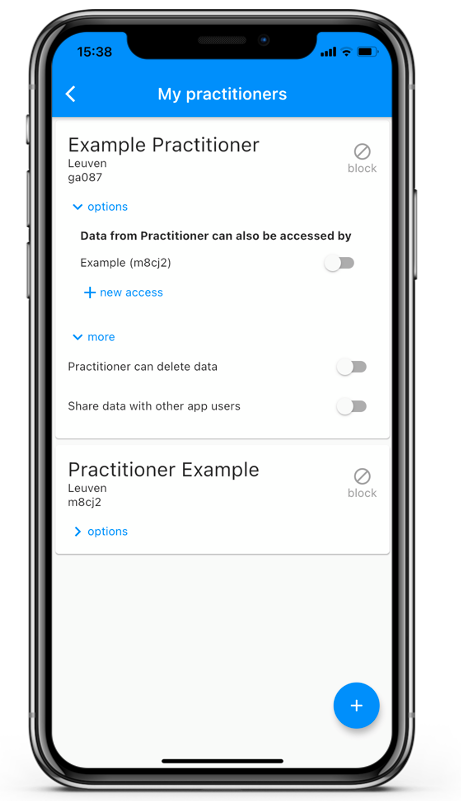
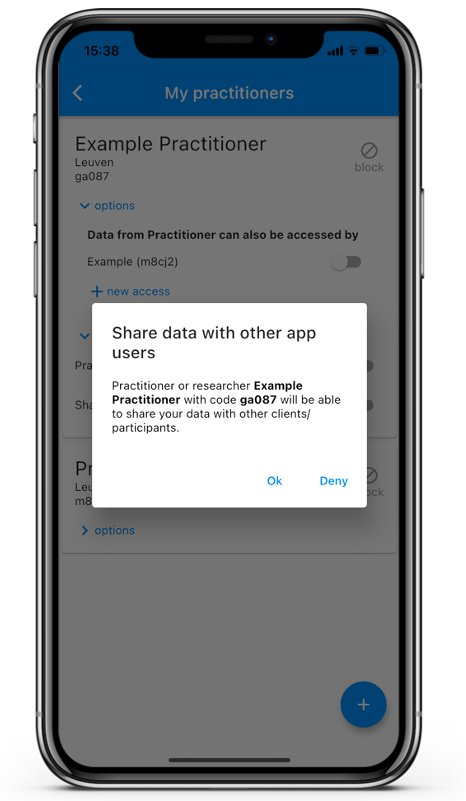
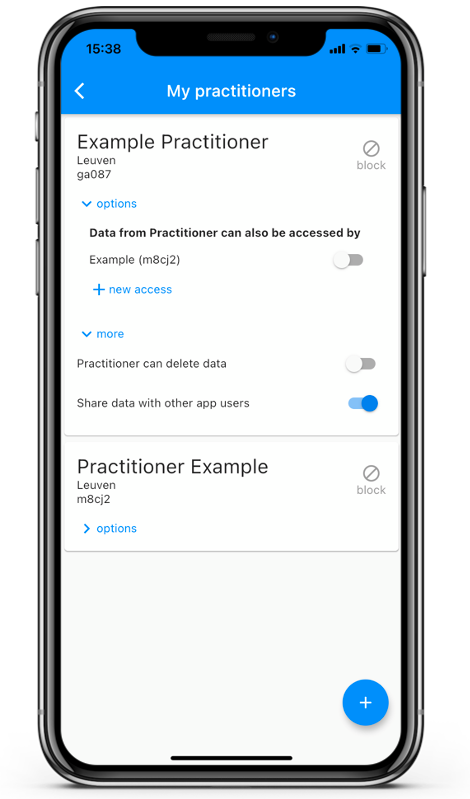
Trigger a questionnaire for another client
It is possible to create a follow-up questionnaire for another client. First create a question with type follow up in the questionnaire of client A. Subsequently, under specific, choose ‘set other target client’. Finally choose the other client.
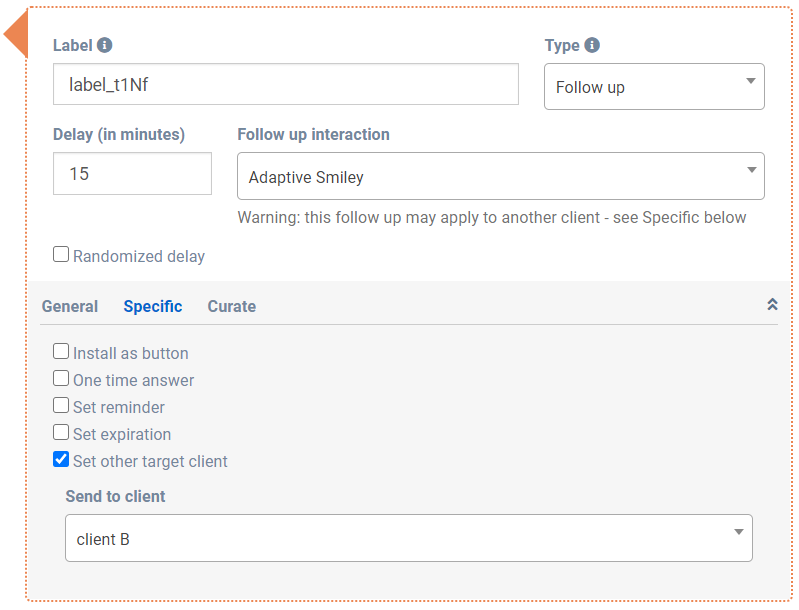
Share an answer from client A with client B
To share an answer with client B, the questionnaire of client A should include a question with type ‘Share answer’. In this question, the label of the answer that will be shared can be given as well as the client with which the answer will be shared.
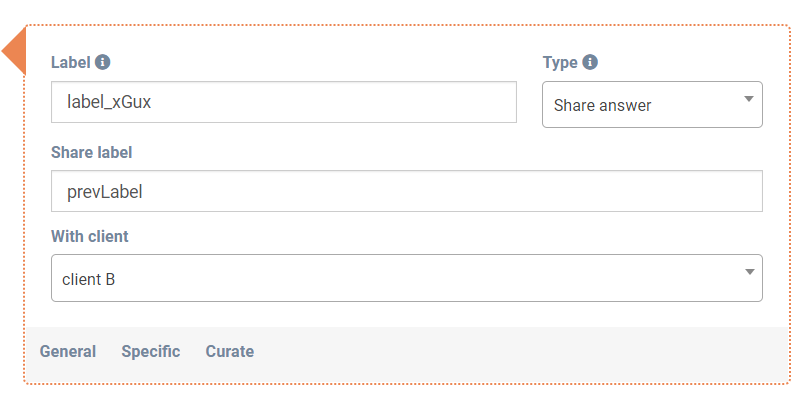
Collect (load) an answer from client A
Once client A has shared his answer (see figure above), client B can collect or load this answer. To do so, the questionnaire or interaction of client B should include a question of type ‘Collect answer’ (see figure below).
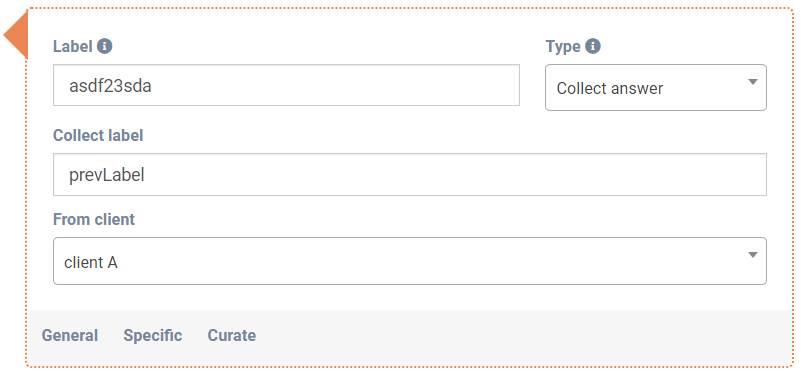
Compare answer from client B with answer from client A
Once an answer has been collected (see section above), it can be used. It is for example possible to compare a new answer from client B with a shared answer from client A. For example, if ‘prevLabel’ resulted from a slider question from client A, client B can also answer a slider question. Let’s say this new question has label ‘prevLabelB’. It is then possible to compare both answers using a computation question. Both answers can be compared using multiple expressions:
- [prevLabel]==[prevLabelB]: this will return 1 or true of both answers are exactly the same
- abs([prevLabel]-[prevLabelB])<10: this will return 1 or true if the difference between both label is smaller then 10
- [prevLabel]<[prevLabelB]: this will return true if the answer from prevLabel is smaller than the answer from prevLabelb.
Show an answer from client A to client B
It is also possible to show the answer from client A to client B. After the answer from client A has been collected or loaded by client B (see section above), it can be shown using piped text. For example, creating a question with type ‘Media: text’, and setting the statement to ‘@INSERT{[prevLabel]}’ will show the answer from the question with label ‘prevLabel’.
